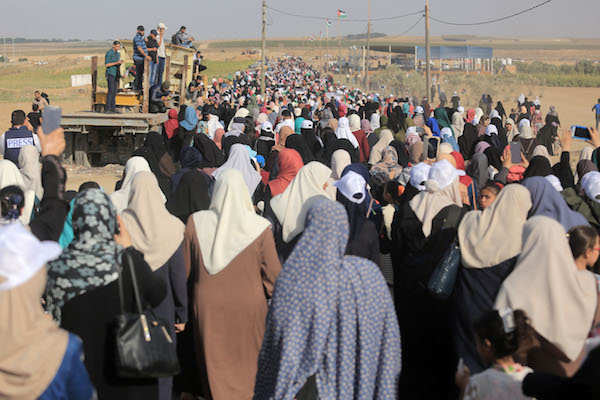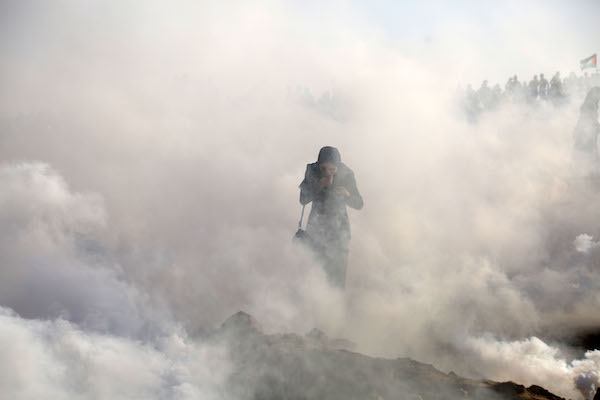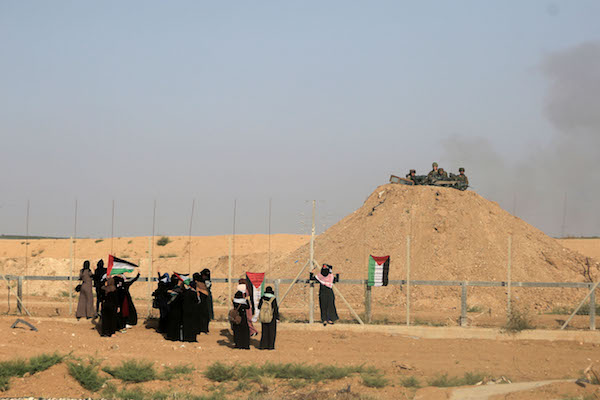This was the first time since the start of the Great Return demonstrations, during which Israeli snipers have killed well over 100 and wounded thousands, that the march was led by women.
By Meron Rapoport

Thousands of Palestinian women took part in march on the border fence separating the Gaza Strip and Israel on Tuesday, in one of the largest such demonstrations to take place since the Great Return March began on March 30. It was also the first time since the start of the Great Return demonstrations, during which Israeli snipers have killed well over 100 and wounded thousands, that the march was led by women.
Israeli troops positioned along the border shot heavy barrages of tear gas toward the demonstrators, some of whom came all the way up to the fence, east of Gaza City. The Health Ministry in Gaza reported that 124 people received medical treatment, most for tear gas inhalation but also for gunshot wounds.
Mohammad Za’anoun, a photojournalist who has been working with +972 Magazine in covering the protests for several months, was one of the wounded. “We were standing 600 meters from the fence,” Za’anoun said, reached by phone Wednesday morning.
“They shot a few heavy volleys of tear gas toward us,” he continued. “I fell to the ground and wasn’t able to get up. A young man came to help me and then he was struck by a bullet. The shrapnel from that bullet hit me in my arm and leg.”
Za’anoun was brought to a local hospital and released later Tuesday night.

The size of the protest was reminiscent of the first few protests in late March and early April, Za’anoun said. The women who participated were a mix of religious and secular, from all over Gaza, he added. Many of them brought their children, but left them a safe distance from the border fence where Israeli troops were deployed.
It was younger women who ultimately marched toward the fence itself, some getting close enough to hang flags on it.

In addition to using tear gas to disperse the protests, the Israeli military also deployed snipers who would shoot at the protesters from time to time.
“My feeling is that there are going to be more mass protests in the coming days,” Za’anoun continued. “People are ready to die because they feel like the current situation is like death. When I’ve asked people, including highly educated people, why they are marching on the border, they say it’s because of the economic situation.”
Meron Rapoport is an editor at Local Call. This article was first published in Hebrew on Local Call. Read it here.

